How Much Can a Greenhouse Extend the Growing Season?
Last year I designed and built a hoop house for around $650 in materials. I didn’t want to waste money heating the thing, so the plan was to keep it passive. Since I never worked with an unheated greenhouse before, I spent the year running experiments with the main goal of extending our growing season. I recorded the temperatures in the hoop house, and tried growing a variety of cold weather crops. The greenhouse significantly extended our growing season, but what surprised me most was how much better plants grow in there.
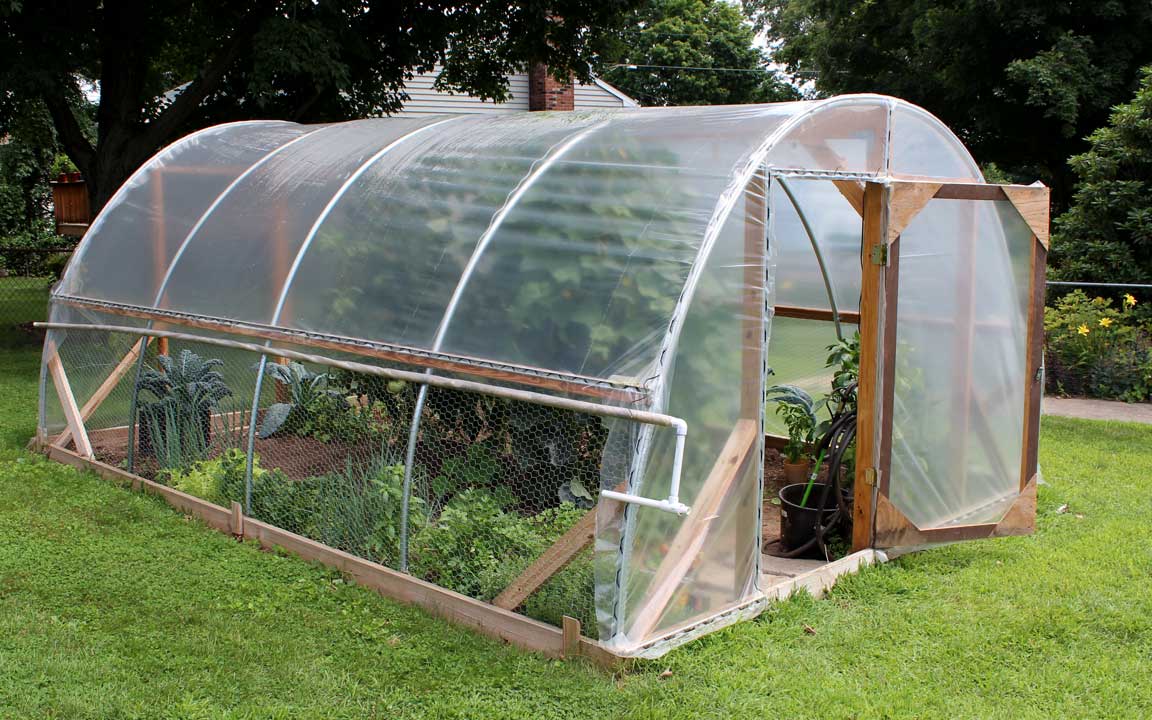
Winter temperatures inside a passive greenhouse
To measure temperatures inside the greenhouse I bought a cheap temperature data logger. These tiny USB data loggers (affiliate link) are usually used to track temperatures of foods, chemicals, or medicines during transportation. I set mine up to record temperatures inside the greenhouse every 15 minutes, and left it running all year long.
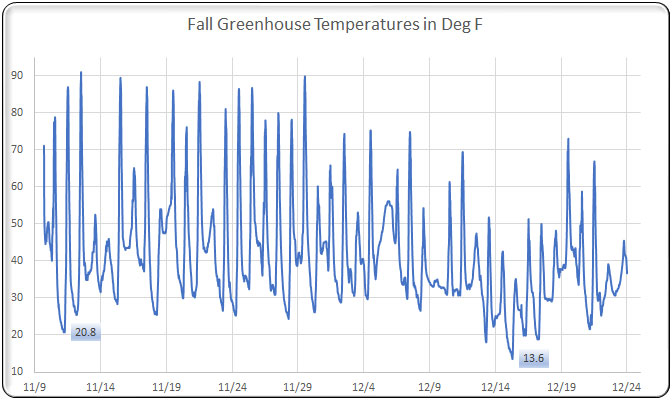
When it comes to capturing the sun’s energy, this hoop house kicks ass. There is a huge spike in the greenhouse temperature every time the sun comes out. Even on days when the outside temperature stays well below zero, the greenhouse temperature can reach 60-70° F.
At night however, the greenhouse plastic which only has an R value of about 0.8 can’t keep the heat in. The temperature quickly plummets to match the outside temperature. That’s why it’s extremely expensive to keep a greenhouse heated (my neighbor spends over $1k a year to keep his at 50°F.)
Just looking at the data, the greenhouse looks like it would be a hostile environment with wild temperature swings. What surprised me was how the plants thrived in there.
The in the fall, the greenhouse extended our growing season by about 2 months
As the fall weather gets colder, the humidity in the air plummets, but it’s a different story in the greenhouse. When the sun starts heating things up, water evaporates and it gets very humid. Anytime I walk inside, my glasses immediately fog up. With nowhere else to go, the water vapors condense on the plastic and rain back down inside the greenhouse.
It turns out tender leafy greens love this humid terrarium environment. In fact, if I open the sides to vent heat on a hot day, the plants immediately wilt from exposure to the dryer outside air.
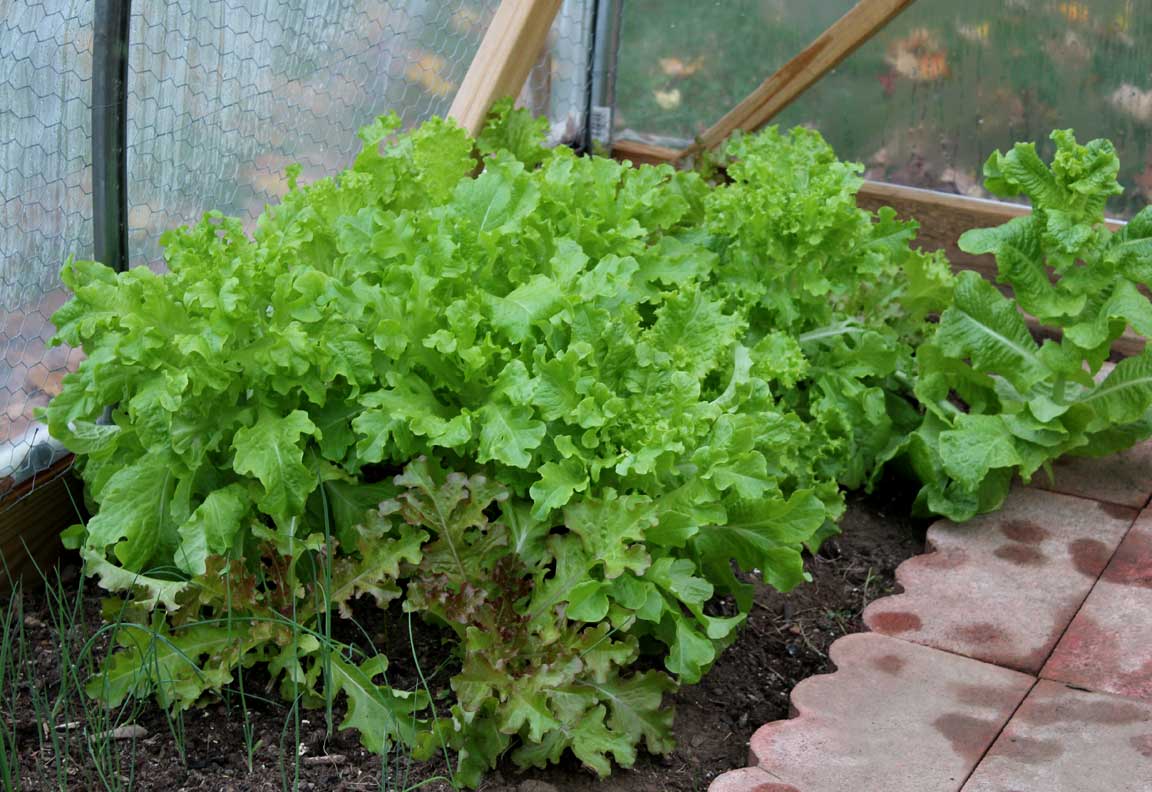
As the fall season progressed, plants outside started dying off, but the greenhouse was yielding some of the lushest greens I’d ever grown. Still, I had a feeling the good times would end when we got a good frost…
The first hard frost came in early November. The thermometer in the greenhouse logged an overnight low of 21°F. When I checked on the plants in the morning, everything was frozen solid and covered in ice crystals. The lettuce leaves were translucent with ice. I went inside and informed the wife that our greenhouse experiment was over for the year.
A few hours later the sun started to warm things up. I went outside to clean up the frozen mess, and to my surprise, most of the plants had completely recovered. I knew lettuce was cold hardy, but I didn’t know it was to this extreme. Meanwhile, pretty much everything in the garden outside was dead.
At this point my lettuce, tatsoi, arugula, kale, green onions, oregano, parsley, turnips, carrots, and thyme were all going strong. The only plants that didn’t make it in the greenhouse were the beets. Even after the greenhouse temperatures plummeted to 13°F a few weeks later, most of those plants still survived.
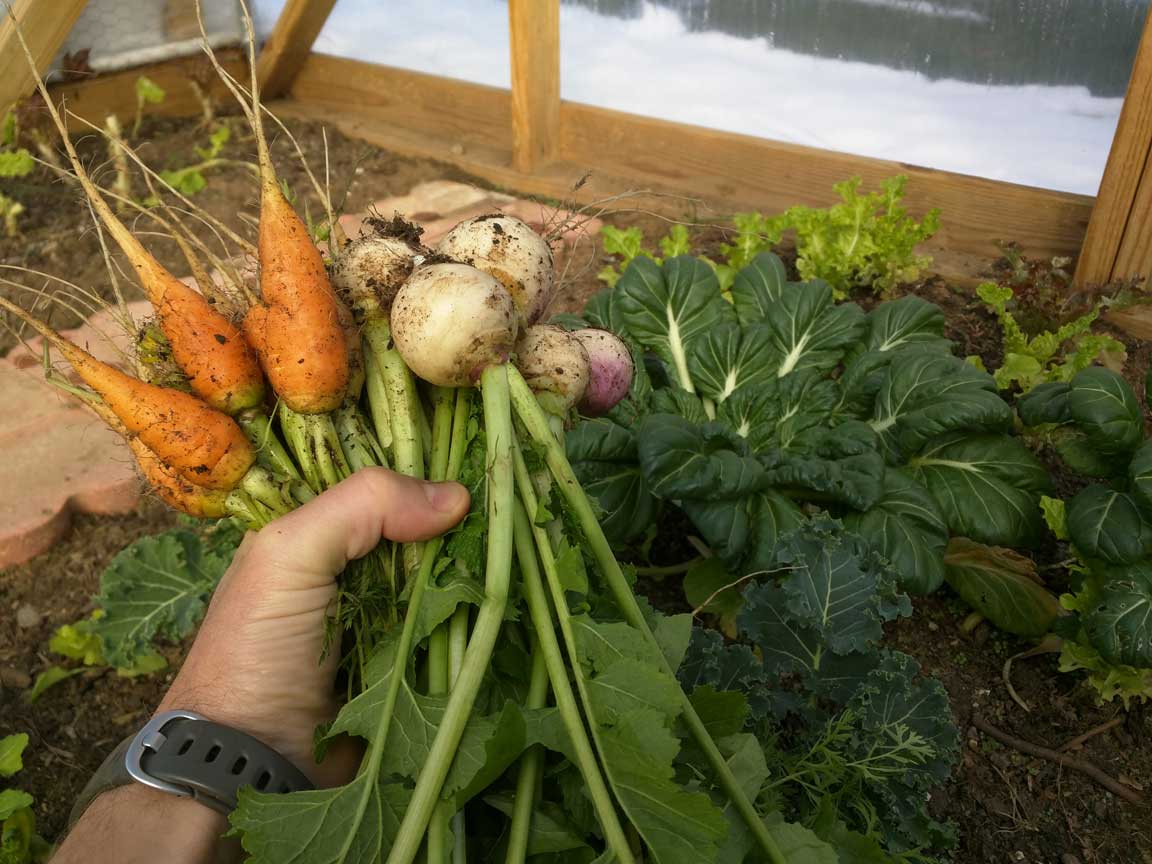 Picking veggies on a snowy day
Picking veggies on a snowy day
For a solid two months after the outside garden was done, the greenhouse crops kept coming. Each night, the plants froze, and each morning as the sun came out, they thawed back out and kept growing. I was still picking lettuce, kale, tatsoi, turnips and carrots in December.
In the spring, the greenhouse growing season started 2 months early
In the beginning of March, I started some lettuce, tatsoi, and arugula seeds. This was about two months before I normally start my outside garden. The seedlings started out slow. Like the fall greenhouse crops, the plants would freeze at night, then thaw and keep growing when the sun came out. As the weather warmed, the plants grew faster, and by mid April I was back to picking fresh greens again.
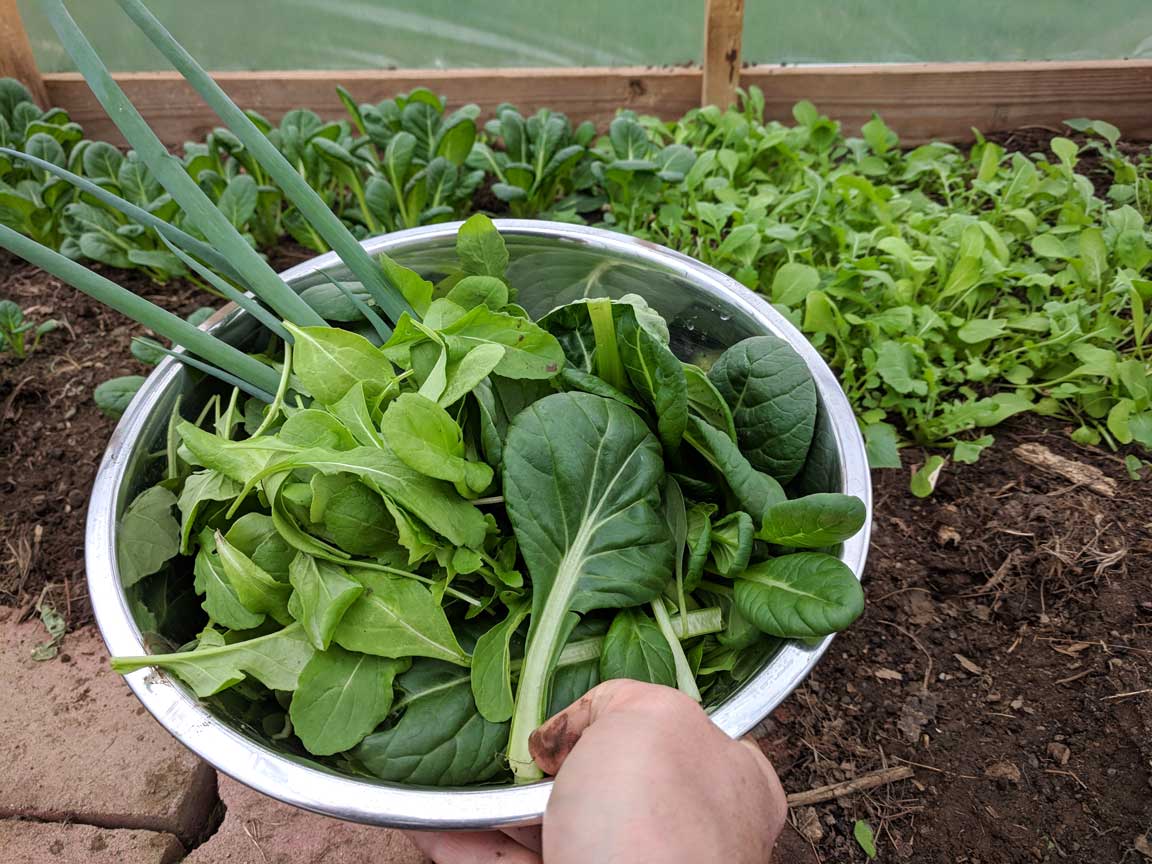 Early spring greens
Early spring greens
Normally I only plant one round of lettuce, but the greens grow fast in the greenhouse, so this spring I just kept planting every few weeks. In all, I probably planted 4 separate crops of lettuce and 6 rounds of arugula. The fastest growing crop I’ve tried in the greenhouse, arugula literally rockets out of the ground. I can be picking it in as little as four weeks after I plant seeds.
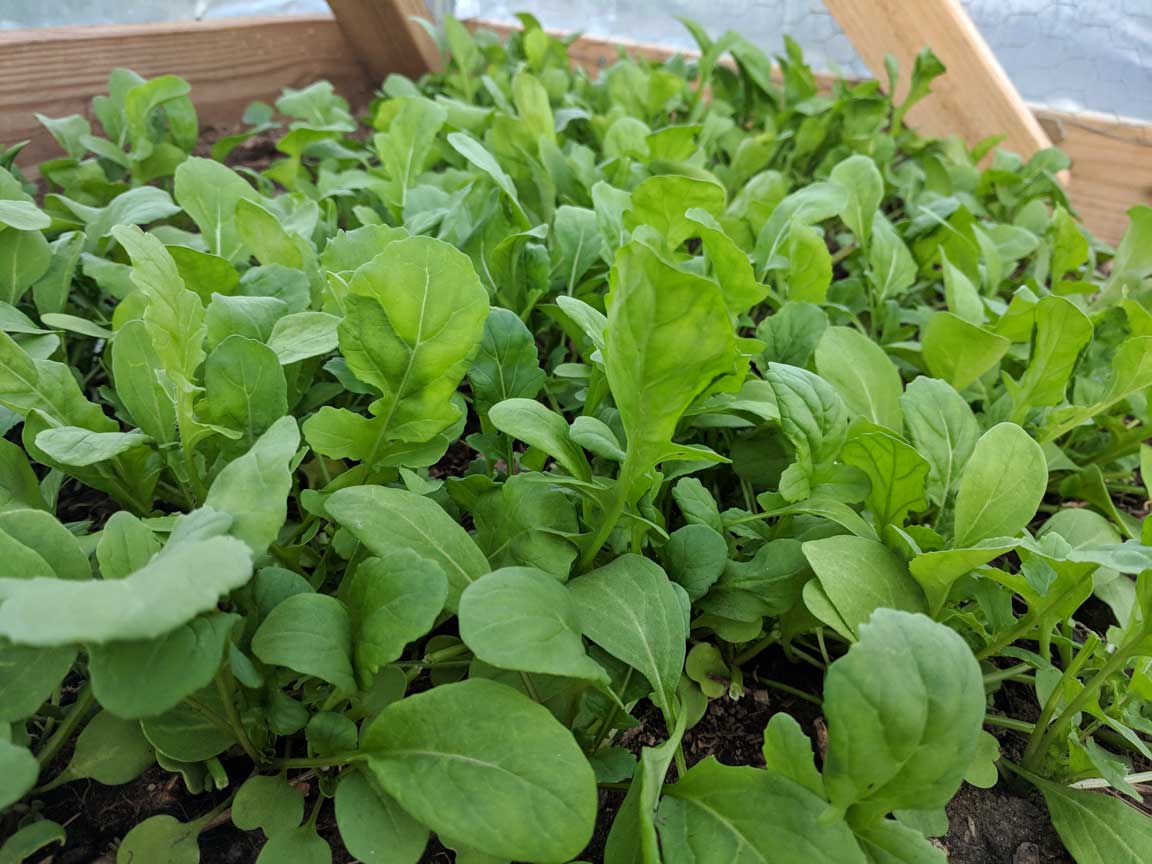 Arugula grows fast
Arugula grows fast
When it came to extending the spring and fall growing seasons, the greenhouse was a huge success, but I also put it to work in the summer. Once nights started warming up, I planted some early tomatoes and cucumbers.
During the summer months, the greenhouse made some crops more productive
Both the tomatoes and cucumbers started producing fruit much sooner in the greenhouse than they did in the garden outside. While I overcrowded the plants, the cucumbers went nuts in the greenhouse. They really seemed to enjoy all the extra heat, and I’ve never been so successful growing them.
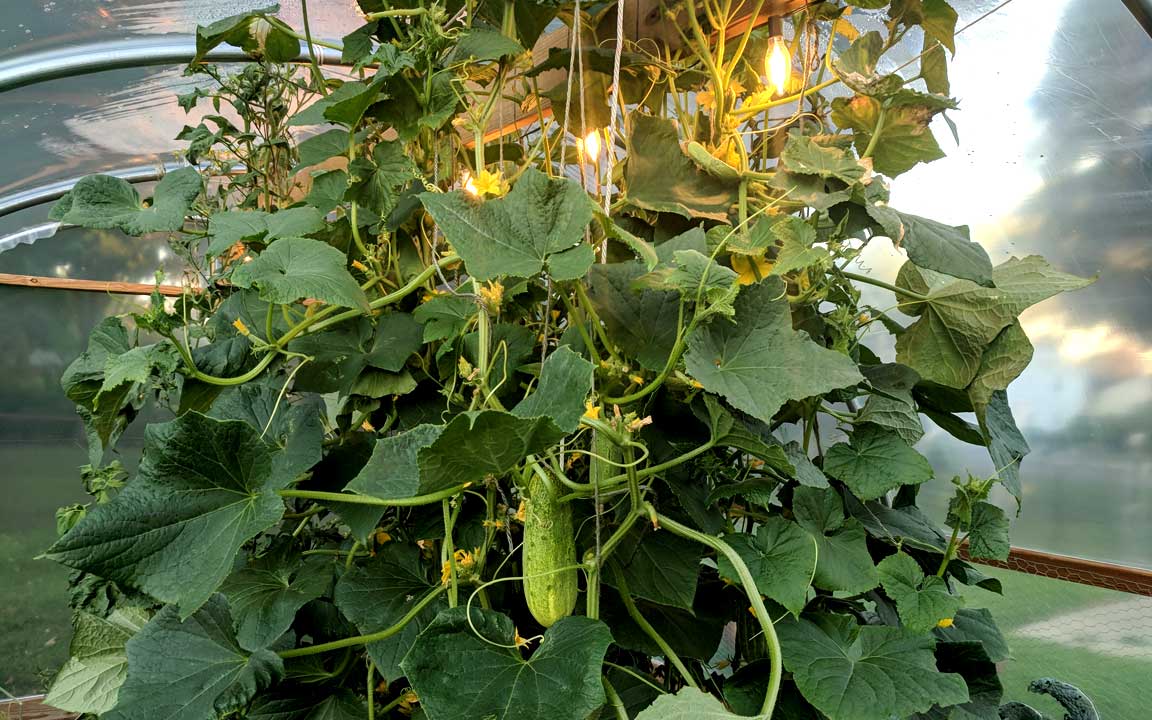
Whether it was the extra heat or humidity, even in the summertime, all of my plants were getting bigger and lusher inside the greenhouse.
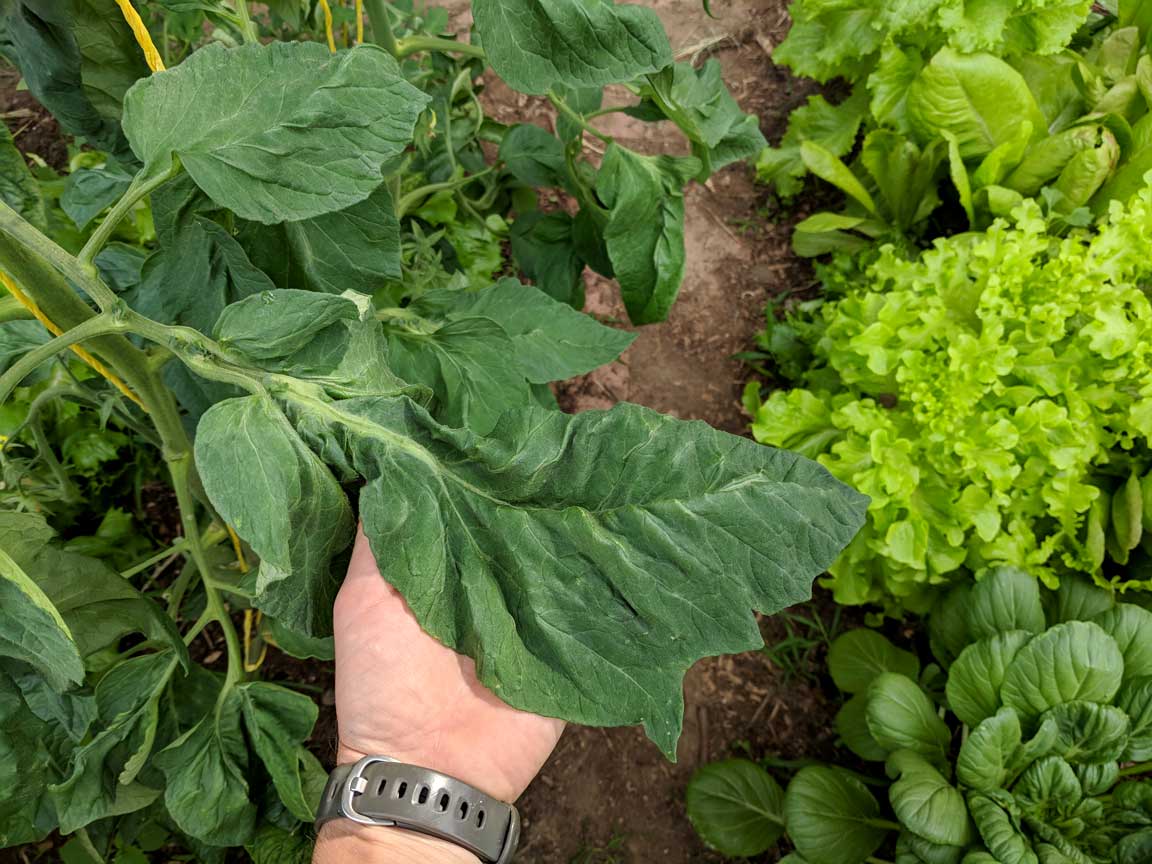 That’s a massive tomato leaf
That’s a massive tomato leaf
By mid summer I was inundated with cucumbers and early tomatoes.
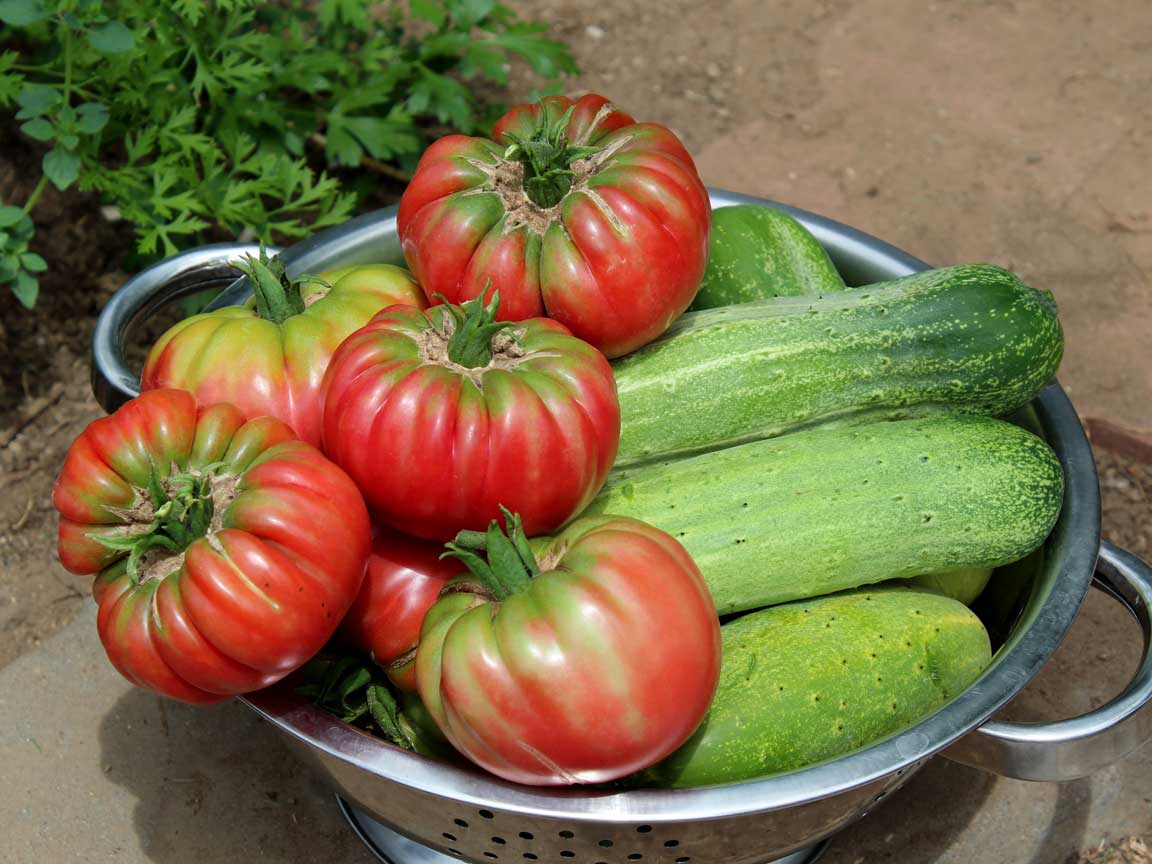
While I did get early tomatoes, the bigger varieties seemed to yield better fruits in my outdoor garden. This could have been because my greenhouse is partly shaded in the summer months, or because of how I watered the plants. Regardless, next year I might just stick with smaller cherry tomato varieties in the greenhouse, and keep the bigger ones out in the garden.
How this hoop house design held up with snow
When I built this greenhouse, one of my biggest concerns was snow load. We get our fair share of snow in New England, and I’ve seen several hoop houses collapse during larger storms. For that reason, I added a beam down the center of the greenhouse to add strength. So far it’s been working like a champ.
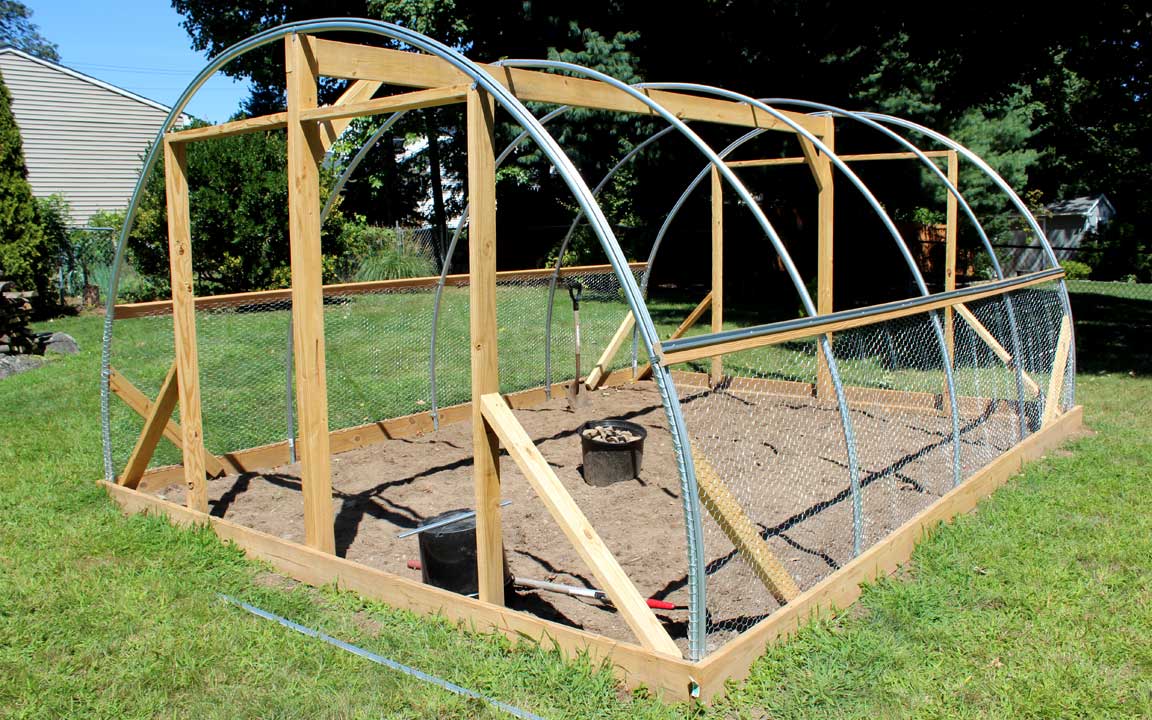 This frame worked out well
This frame worked out well
Last year, I spent the coldest winter days surfing in Costa Rica, and wasn’t around during the worst of our winter storms. Even without anyone clearing the snow, the greenhouse held up just fine. We did however have a relatively mild winter last year, so I’ll wait on saying it’s 100% snow proof until we get a heavy blizzard or two.
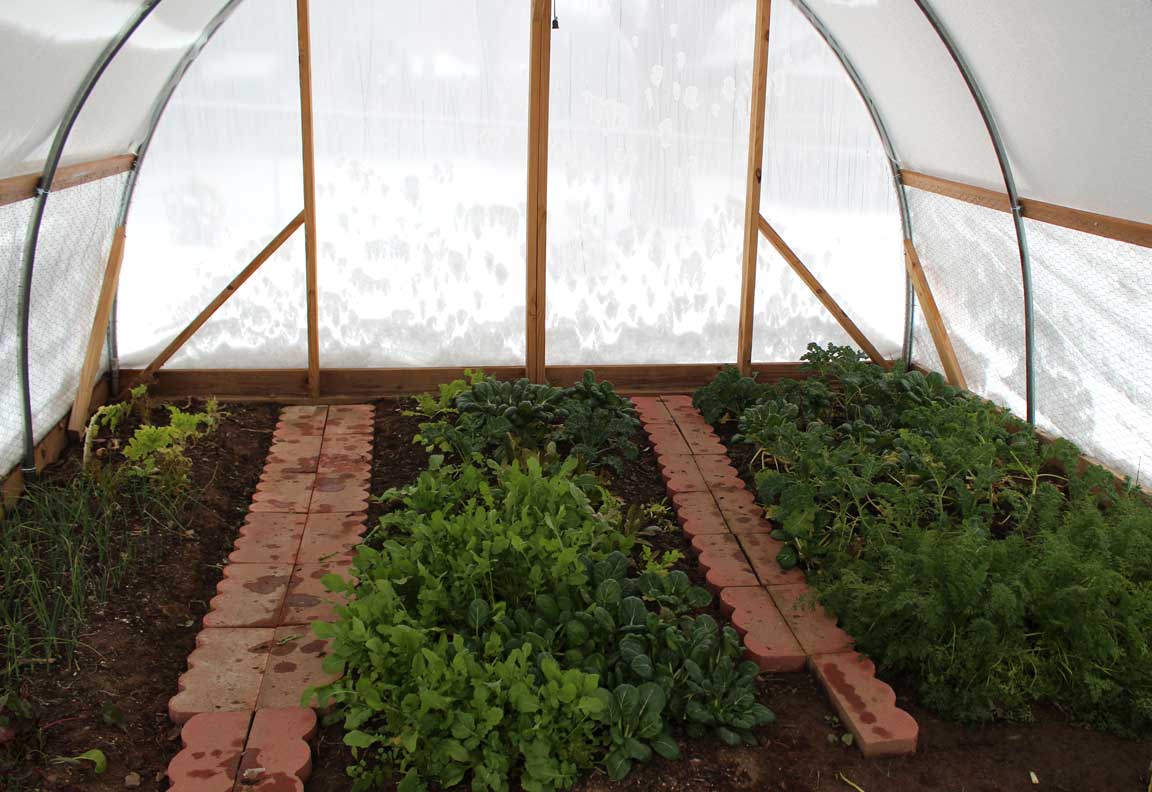 I love gardening in the snow
I love gardening in the snow
Overall, I haven’t really had to do any maintenance to the structure itself. The 6 mil plastic hasn’t torn at all, and the wiggle wire (affiliate links) I used to secure it to the structure has done an excellent job. In the summer I rolled up the side vents, and they kept the greenhouse at a reasonable temperature.
While I wouldn’t change the original design, there are a few small additions I will make to the setup. I’ll probably add automated watering with soaker hoses like I have in the garden. Also the side vents can flap in strong winds when I have them only partially open, and could be secured better. I might also add a window for automated venting at some point to save myself the time of doing it manually.
In addition to extending the season, the greenhouse has other advantages
In addition to significantly extending our growing season, the greenhouse also serves as a sweet spot to hang out. Even when its raining outside, I can stay dry and warm while still gardening in the greenhouse. During the summer, most of our weeding happens in the evening while we are enjoying some beers. Now, even with the shorter fall days, I can throw the party lights on and we can enjoy our greenhouse garden anytime.
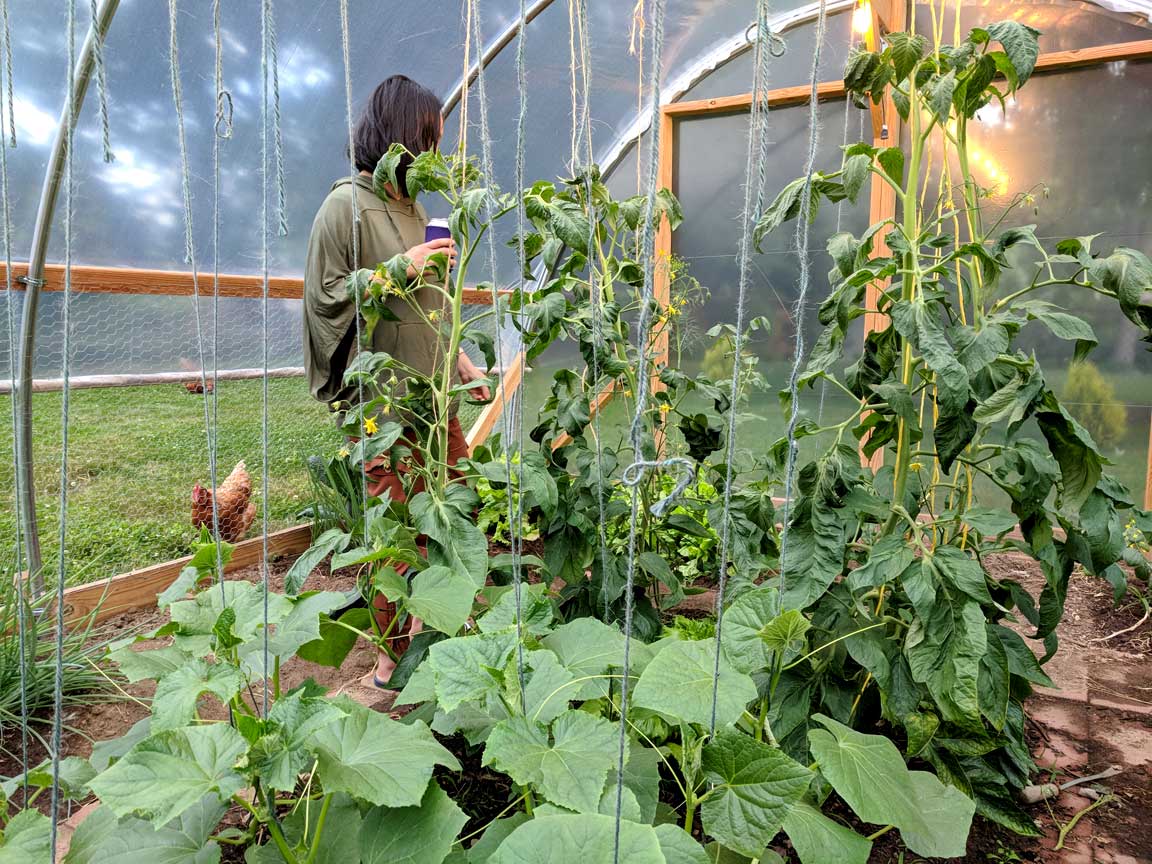
Since the whole space is enclosed, I also have less pests to deal with. I put chicken wire on the sides, so the space remains protected even when I open the side vents during the summer. I still have to deal with bugs, but birds, squirrels, and chipmunks are kept out.
Another benefit is how clean all the plants stay when protected from the elements. Without wind whipping up leaves, and rain kicking up mud, the greens we pick from the greenhouse hardly need any cleaning. This saves a lot of time, especially with the amount of greens we are getting.
Overall, the greenhouse extended our growing season by over 60%
Our normal garden season usually lasts about 6 months running May-October. The greenhouse growing season lasted about 10 months, running March-December. That’s a 67% increase!
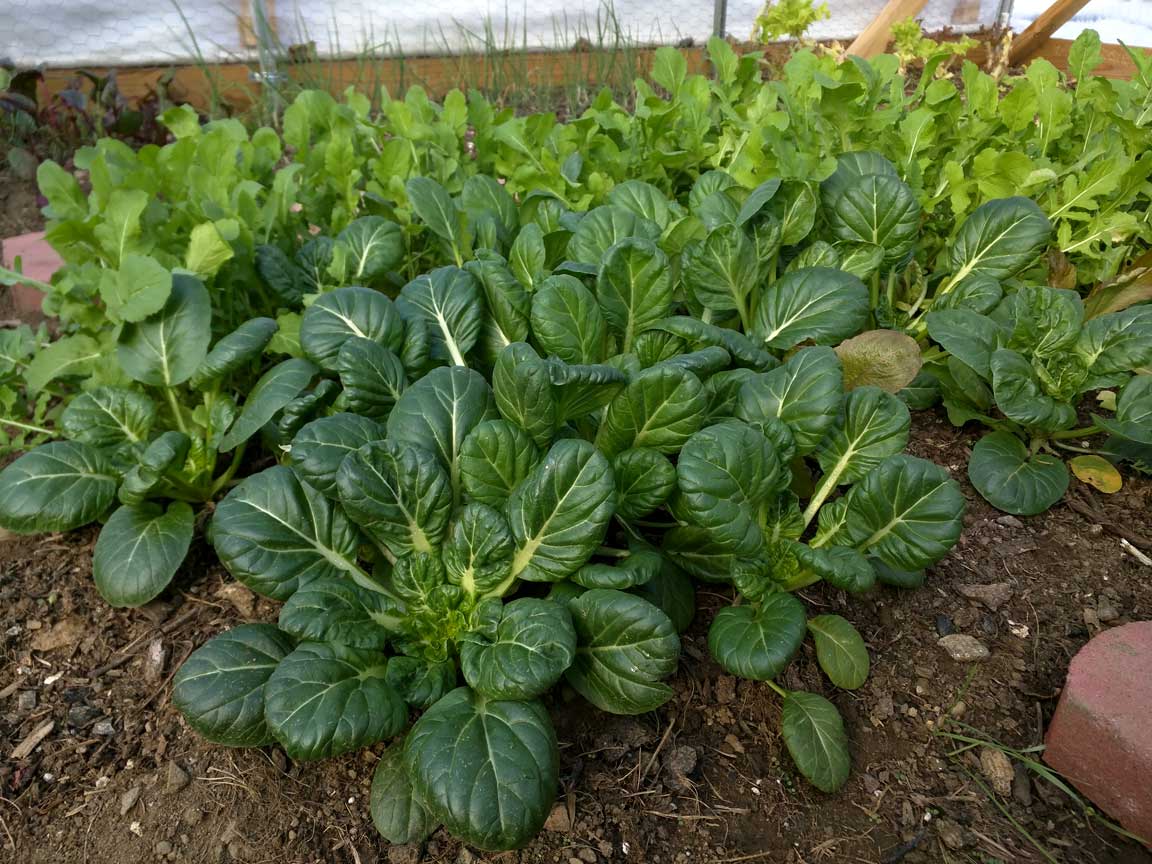
When I built this greenhouse last year, I didn’t know what to expect, but it has been the perfect addition to our urban homestead. It’s been a great new space to hang out, and compared to the garden, plants just grow faster and lusher in there. It’s been way more productive than I thought possible without supplemental heat, and in many ways the greenhouse makes me look like a better gardener than I really am.